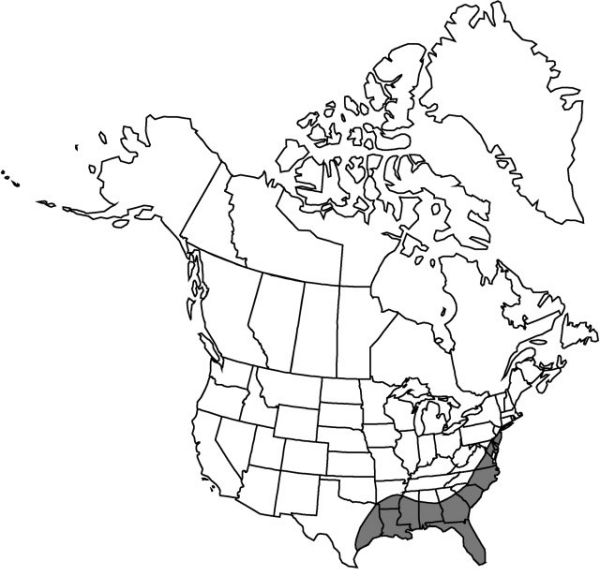Difference between revisions of "Spiranthes praecox"
in A. Gray et al., Manual ed. 6, 503. 1890.
FNA>Volume Importer |
FNA>Volume Importer |
||
| Line 10: | Line 10: | ||
|name=Limodorum praecox | |name=Limodorum praecox | ||
|authority=Walter | |authority=Walter | ||
| + | |rank=species | ||
|publication_title=Fl. Carol., | |publication_title=Fl. Carol., | ||
|publication_place=221. 1788 | |publication_place=221. 1788 | ||
| Line 16: | Line 17: | ||
|name=Ibidium praecox | |name=Ibidium praecox | ||
|authority=(Walter) House | |authority=(Walter) House | ||
| + | |rank=species | ||
}} | }} | ||
|hierarchy=Orchidaceae;Orchidaceae subfam. Orchidoideae;Orchidaceae tribe Cranichideae;Orchidaceae (tribe Cranichideae) subtribe Spiranthinae;Spiranthes;Spiranthes praecox | |hierarchy=Orchidaceae;Orchidaceae subfam. Orchidoideae;Orchidaceae tribe Cranichideae;Orchidaceae (tribe Cranichideae) subtribe Spiranthinae;Spiranthes;Spiranthes praecox | ||
| Line 41: | Line 43: | ||
-->{{#Taxon: | -->{{#Taxon: | ||
name=Spiranthes praecox | name=Spiranthes praecox | ||
| − | |||
|authority=(Walter) S. Watson in A. Gray et al. | |authority=(Walter) S. Watson in A. Gray et al. | ||
|rank=species | |rank=species | ||
| Line 56: | Line 57: | ||
|publication year=1890 | |publication year=1890 | ||
|special status= | |special status= | ||
| − | |source xml=https://jpend@bitbucket.org/aafc-mbb/fna-data-curation.git/src/ | + | |source xml=https://jpend@bitbucket.org/aafc-mbb/fna-data-curation.git/src/f50eec43f223ca0e34566be0b046453a0960e173/coarse_grained_fna_xml/V26/V26_1105.xml |
|subfamily=Orchidaceae subfam. Orchidoideae | |subfamily=Orchidaceae subfam. Orchidoideae | ||
|tribe=Orchidaceae tribe Cranichideae | |tribe=Orchidaceae tribe Cranichideae | ||
Revision as of 20:44, 16 December 2019
Plants 20–75 cm. Roots numerous, slender, mostly to 0.8 cm diam. Leaves persisting through anthesis, to 7, primarily basal reduced to sheathing bracts upward on stem, spreading, linear to linear-lanceolate, 10–25 × 1–5 cm. Spikes loosely to tightly spiraled, 4–7 flowers per cycle of spiral or nearly secund; rachis sparsely pubescent, some trichomes capitate, glands obviously stalked. Flowers white, rarely green; sepals distinct to base, 5.5–10 mm × 2–3 mm; lateral sepals clasping lip, appearing tubular; petals adhering to dorsal sepal, linear, 5–10 × 1–2 mm, apex subacute; lip oblong, 5.5–11 × 2–6 mm, apex dilated, margins often crenulate or toothed, glabrous on adaxial distal surface; veins raised, green, rarely cream colored, prominent, branches divergent, extending nearly to apex; basal calli straight, long-pointed, slender, mostly to 1 mm; viscidium linear-lanceolate; ovary mostly 5 mm. Seeds monoembryonic.
Phenology: Flowering Feb–Jun (Sep, north).
Habitat: Primarily on coastal plain and Gulf Coast in dry to moist roadsides, fields, pine flatwoods, pine savannas, cemeteries
Elevation: 0–400 m
Distribution

Ala., Ark., Del., Fla., Ga., La., Md., Miss., N.J., N.C., Okla., S.C., Tex., Va.
Discussion
Typical plants are easily recognized by the stark white flowers with green venation of the lip. In forma albolabia P. M. Brown & C. McCartney, the lip appears pure white but the raised veins are actually a pale yellow. Plants with creamy green to green flowers, usually in tight spirals, and incurved lateral sepals are local to frequent in north-central Florida and scattered westward in the Gulf counties to eastern Texas.
Hybrids of Spiranthes praecox with S. vernalis are known as Spiranthes ×meridionalis P. M. Brown.
Selected References
None.